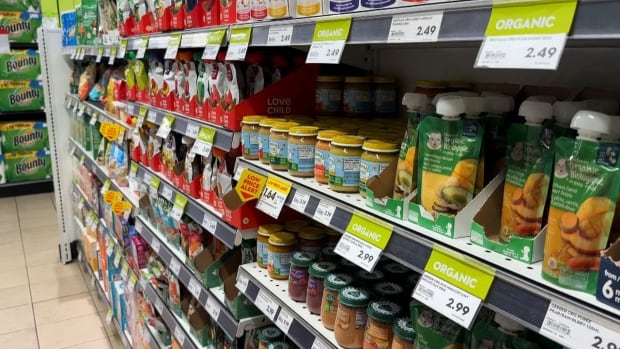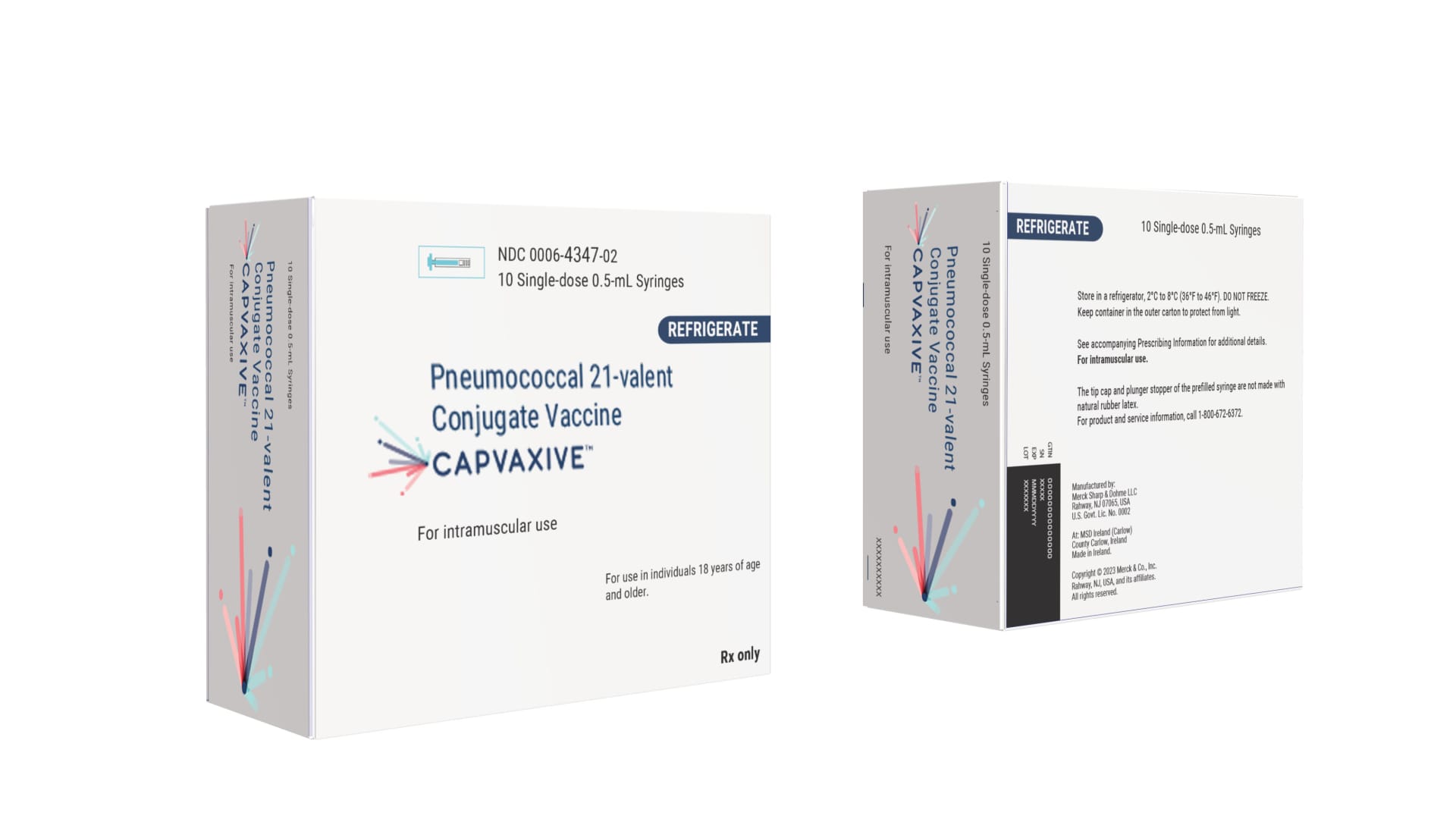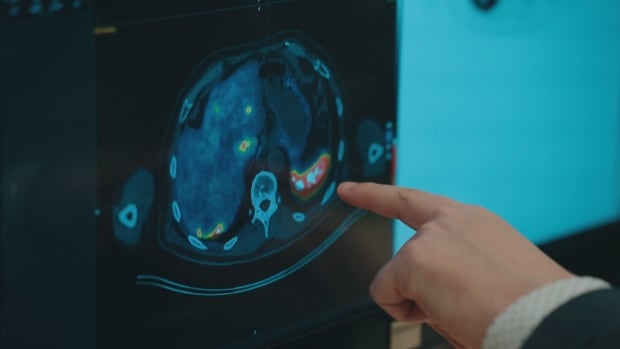The Dose24:55What do I need to know about iron deficiency?
Guelph resident Sasha Burnison was in Grade 6 when she was diagnosed with iron deficiency.
“So I would [feel] like I want to do sports, but just … want to go home and sleep,” said Burnison, now 18 years old.
“[I couldn’t] run around too much, I’d get dizzy.”
After consulting with her family doctor and conducting a blood test, Burnison’s ferritin test to determine her body’s iron stores confirmed that she had below normal levels.
Ferritin is a blood protein that stores iron, and it’s what lab technicians measure when they test for iron deficiency.

Burnison now takes iron supplements to maintain her body’s iron levels. Though she still struggles with bouts of fatigue and dizziness, she says she’s able to maintain a more active lifestyle.
Menstruating and pregnant women and girls have the highest risk for iron deficiency. Children between 18 and 24 months old are another group that are at high risk — though for different reasons.
Experts say they hope new Ontario guidelines will help physicians better identify and treat iron deficiency in patients of all ages.
How to tell if your child is iron deficient
Iron deficiency falls into two general categories, with and without anemia.
Roughly five per cent of children aged 18 to 24 months old can develop iron deficiency with anemia, according to Dr. Patricia Parkin, a pediatrician at the Hospital for Sick Children’s department of pediatrics.
“Fifteen to 20 per cent will have non-anemic iron deficiency,” she said.

Iron, most easily absorbed through the consumption of animal protein, is essential for the creation of hemoglobin, a protein that helps transport oxygen across the body.
“If iron stores are low, then hemoglobin level is low and then that can start to affect many systems in the body related to low iron and low hemoglobin,” said Parkin.
If iron deficiency progresses below key levels, that can develop into anemic iron deficiency. Low iron bad enough to be categorized as anemia reduces the body’s ability to make red blood cells.
Using data from Sick Kids Hospital, Parkin says Ontario’s previous ferritin-measuring guidelines meant that roughly 16 per cent of young children aged 18 to 24 months old were flagged as having iron deficiency.
Parkin says the new higher thresholds mean roughly 44 per cent of young children between 18 and 24 months qualify as iron deficient.
According to Parkin, it can be difficult for parents to tell if their children are iron deficient because the condition can be “subtle and gradual.”
In adolescents, symptoms include shortness of breath, difficulty concentrating and fatigue.
In infants and toddlers, however, Parkin says irritability is a key sign that a child might be iron deficient.
If parents are concerned about iron deficiency, they can speak to their child’s doctor about conducting a ferritin blood test.
Poor nutrition most commonly leads to iron deficiency in children
At the most basic level, iron deficiency is caused by a lack of dietary iron, as well as blood loss, according to Parkin.
“The excellent example of losing blood would be menstruating females,” she said.
In Ontario, roughly 40 per cent of menstruating women and girls live with iron deficiency, according to hematologist Dr. Michelle Sholzberg, adding that the number is fairly similar across Canada.
“When we looked at St. Michael’s Hospital to look at the proportion of women at labour and delivery who had iron deficiency, it’s above 80 per cent,” said Sholzberg, director of Hematology at the University of Toronto’s department of medicine.
When it comes to young children between one and two years old, however, the biggest risk factor for iron deficiency is nutrition.

Assuming a healthy pregnancy with no complications like excessive blood loss during delivery, babies should receive a “very good iron supply” from their mothers, according to Parkin.
“That iron supply should last probably for the first six months of life,” she said.
Pediatricians largely recommend breastfeeding children for the first six months of their lives.
However, since breast milk contains little iron, physicians recommend slowly starting to add solid foods to infant diets after six months, both to introduce more iron-rich foods but also to encourage developing oral motor skills.
“Let’s say all of that goes really well, and between one and two years of age, they’re consuming table food with the family and they probably have good iron stores,” Parkin said.
After receiving some questions from one of his patients who was diagnosed with anemia, Dr. Raj Bhawdraj, an urgent care physician in Calgary, decided he should raise awareness on what it means to be anemic. He spoke with CBC Calgary News at 6 host, Rob Brown.
If the transition to solid foods goes poorly, and children don’t consume iron-rich foods between one and two years old, that’s when nutritional iron deficiency becomes a potential risk.
Parkin says a child’s brain is vulnerable to low iron stores during periods like the toddler years when they’re growing a lot.
She says nutritional iron deficiency in children can lead to delayed cognitive development and social skills development.
Sholzberg says that iron deficiency is associated with lower IQ, but that it’s reversible with treatment.
Certain foods like cow’s milk can interfere with the absorption of dietary iron, because “the calcium in cow’s milk interferes with the absorption of iron,” said Sholzberg, speaking with Dr. Brian Goldman, host of CBC’s The Dose.
“Also, drinking too much cow’s milk makes you feel really full and less likely to eat solid foods that contain more iron.”
Since baby formula is typically enriched with iron, Parkin says infants eating formula should develop “really nice iron stores,” around the age of one.
How to treat iron deficiency
In mild or moderate cases of iron deficiency in children, Parkin says the most common treatment approach is addressing the nutritional issues that likely caused the deficiency in the first place.
“A physician or a nurse or a dietitian could do some diet counselling about what foods to have, what foods and diet practices to consider and what things to avoid,” she said.
For example, food and drinks rich in vitamin C help with the absorption of iron. Tea, in contrast can get in the way of iron absorption.
“To my mind, of course a one- or two-year -old shouldn’t be drinking tea, but we do see it from time to time,” said Parkin.
In the event that diet counselling is insufficient, the next step would be to address the deficiency through supplemental iron, usually in an oral form, Parkin says.
“That usually we give in a particular dosage, usually over a three- or four-month period of time,” she said.
In severe or life-threatening cases that require hospitalization, Parkin says intravenous iron can correct the deficiency more quickly.
Parkin recommends parents looking for an oral iron supplement choose a product composed of ferrous sulfate or ferrous fumarate.
Additionally, Parkin says there are oral iron supplements available in liquid form that are easier to consume.
Common side effects of iron supplements include constipation, diarrhea, dark stool and abdominal cramps.
Parkin says these side effects typically go away once a child has completed their course of oral iron.
“We recommend the oral iron … daily for three to four months, and you really do have to be compliant,” she said.
“You just can’t take it here and there.”






